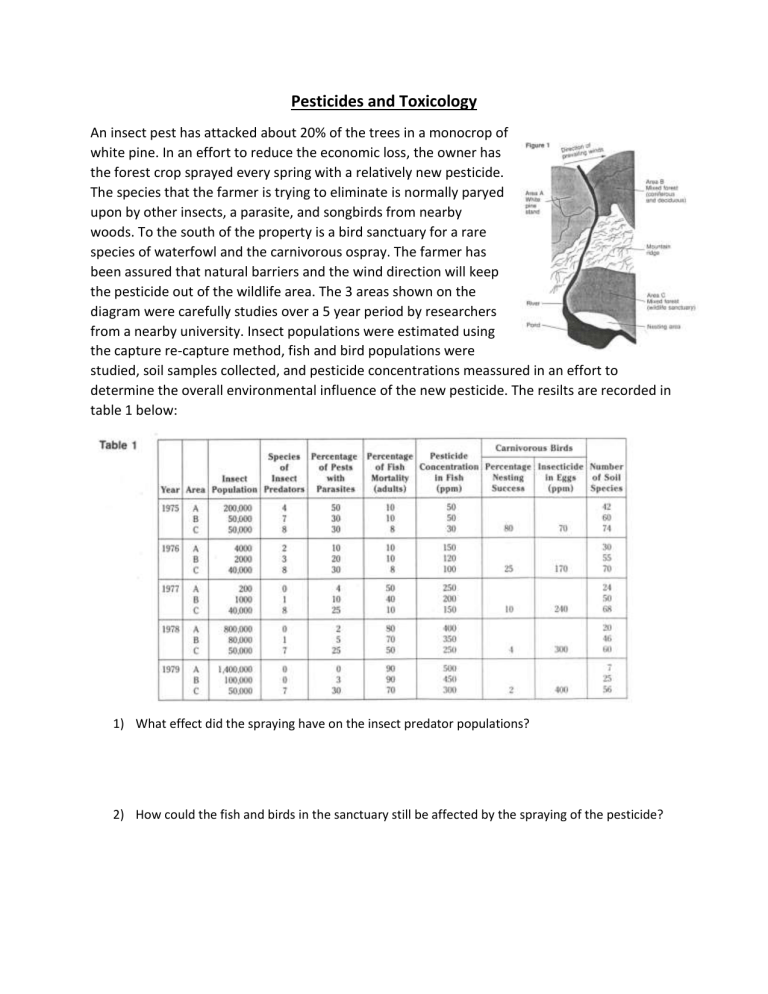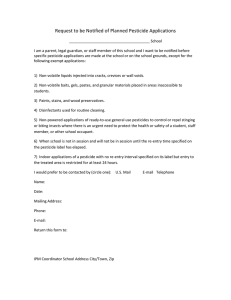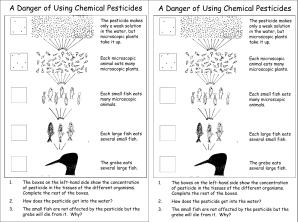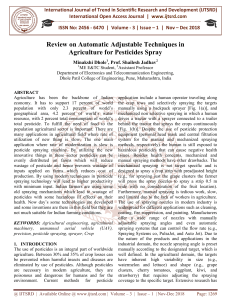
Pesticides and Toxicology An insect pest has attacked about 20% of the trees in a monocrop of white pine. In an effort to reduce the economic loss, the owner has the forest crop sprayed every spring with a relatively new pesticide. The species that the farmer is trying to eliminate is normally paryed upon by other insects, a parasite, and songbirds from nearby woods. To the south of the property is a bird sanctuary for a rare species of waterfowl and the carnivorous ospray. The farmer has been assured that natural barriers and the wind direction will keep the pesticide out of the wildlife area. The 3 areas shown on the diagram were carefully studies over a 5 year period by researchers from a nearby university. Insect populations were estimated using the capture re-capture method, fish and bird populations were studied, soil samples collected, and pesticide concentrations meassured in an effort to determine the overall environmental influence of the new pesticide. The resilts are recorded in table 1 below: 1) What effect did the spraying have on the insect predator populations? 2) How could the fish and birds in the sanctuary still be affected by the spraying of the pesticide? 3) What is the LD50 for the fish exposed to the insecticide? 4) What are two ways to explain why the pest population increased in 1978 when in 1977 it appeared that it had been eliminated in area A?




